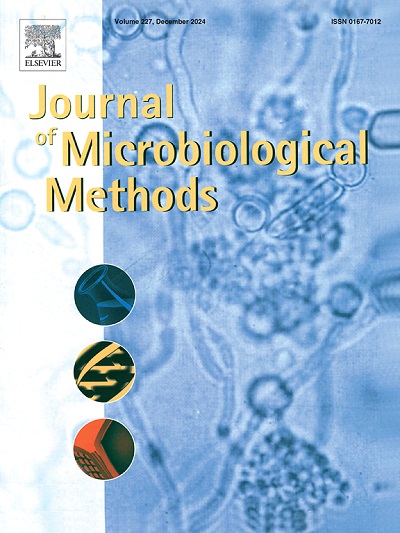Exploring the multifaceted probiotic potential of Lactiplantibacillus plantarum NMGL2, investigating its antimicrobial resistance profiles and bacteriocin production
IF 1.9
4区 生物学
Q4 BIOCHEMICAL RESEARCH METHODS
引用次数: 0
Abstract
Background
Lactiplantibacillus plantarum is widely recognized for its probiotic and antimicrobial properties, making it a valuable candidate for food and clinical applications. Genomic characterization provides deeper insight into its potential health benefits and safety profile.
Aim
This study aimed to sequence and analyze the genome of L. plantarum NMGL2 to evaluate its antimicrobial resistance, probiotic potential, and genetic suitability for biotechnological applications.
Methods
The genomic DNA of L. plantarum NMGL2 was extracted and sequenced using Illumina technology. Genome assembly and annotation were performed, followed by gene prediction using Prokka and identification of antimicrobial resistance genes, virulence factors, and probiotic markers via BLAST. Metagenomic analysis of gut microbiota samples and phylogenetic analysis were conducted to assess strain relationships with other L. plantarum isolates.
Results
The genome analysis revealed approximately 3000 protein-coding genes, including those encoding bile salt hydrolase, antimicrobial peptides, and antibiotic resistance determinants. Phylogenetic analysis showed that NMGL2 is closely related to other probiotic L. plantarum strains, supporting its probiotic characteristics and its potential role in combating pathogens.
Conclusion
L. plantarum NMGL2 demonstrates promising probiotic traits and carries genes that support its application in food safety and clinical contexts. Further, in vivo studies are needed to validate its health benefits and ensure safety, particularly in treating gastrointestinal disorders.
探索植物乳杆菌NMGL2的多方面益生菌潜力,研究其耐药谱和细菌素的产生
植物乳杆菌因其益生菌和抗菌特性而被广泛认可,使其成为有价值的食品和临床应用候选者。基因组特征可以更深入地了解其潜在的健康益处和安全性。目的对植物乳杆菌(L. plantarum) NMGL2的基因组进行测序和分析,以评价其耐药性、益生菌潜力和生物技术应用的遗传适宜性。方法提取植物乳杆菌NMGL2基因组DNA,利用Illumina技术进行测序。进行基因组组装和注释,然后使用Prokka进行基因预测,通过BLAST鉴定抗菌素耐药基因、毒力因子和益生菌标记。对肠道菌群样本进行宏基因组分析和系统发育分析,以评估菌株与其他植物乳杆菌分离株的关系。结果基因组分析揭示了大约3000个蛋白质编码基因,包括编码胆汁盐水解酶、抗菌肽和抗生素耐药性决定因素的基因。系统发育分析表明,NMGL2与其他植物乳杆菌菌株亲缘关系密切,支持其益生菌特性及其在抗病原体中的潜在作用。plantarum NMGL2显示出有希望的益生菌特性,并携带支持其在食品安全和临床环境中应用的基因。此外,需要进行体内研究来验证其对健康的益处并确保安全性,特别是在治疗胃肠道疾病方面。
本文章由计算机程序翻译,如有差异,请以英文原文为准。
求助全文
约1分钟内获得全文
求助全文
来源期刊

Journal of microbiological methods
生物-生化研究方法
CiteScore
4.30
自引率
4.50%
发文量
151
审稿时长
29 days
期刊介绍:
The Journal of Microbiological Methods publishes scholarly and original articles, notes and review articles. These articles must include novel and/or state-of-the-art methods, or significant improvements to existing methods. Novel and innovative applications of current methods that are validated and useful will also be published. JMM strives for scholarship, innovation and excellence. This demands scientific rigour, the best available methods and technologies, correctly replicated experiments/tests, the inclusion of proper controls, calibrations, and the correct statistical analysis. The presentation of the data must support the interpretation of the method/approach.
All aspects of microbiology are covered, except virology. These include agricultural microbiology, applied and environmental microbiology, bioassays, bioinformatics, biotechnology, biochemical microbiology, clinical microbiology, diagnostics, food monitoring and quality control microbiology, microbial genetics and genomics, geomicrobiology, microbiome methods regardless of habitat, high through-put sequencing methods and analysis, microbial pathogenesis and host responses, metabolomics, metagenomics, metaproteomics, microbial ecology and diversity, microbial physiology, microbial ultra-structure, microscopic and imaging methods, molecular microbiology, mycology, novel mathematical microbiology and modelling, parasitology, plant-microbe interactions, protein markers/profiles, proteomics, pyrosequencing, public health microbiology, radioisotopes applied to microbiology, robotics applied to microbiological methods,rumen microbiology, microbiological methods for space missions and extreme environments, sampling methods and samplers, soil and sediment microbiology, transcriptomics, veterinary microbiology, sero-diagnostics and typing/identification.
 求助内容:
求助内容: 应助结果提醒方式:
应助结果提醒方式:


